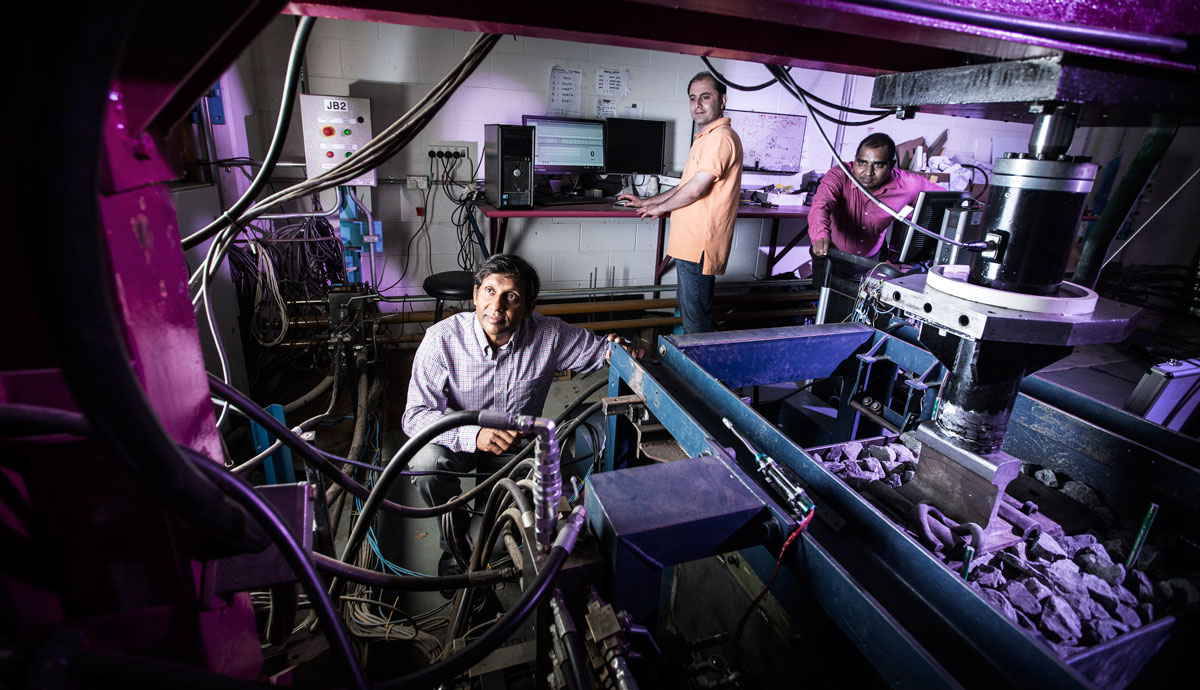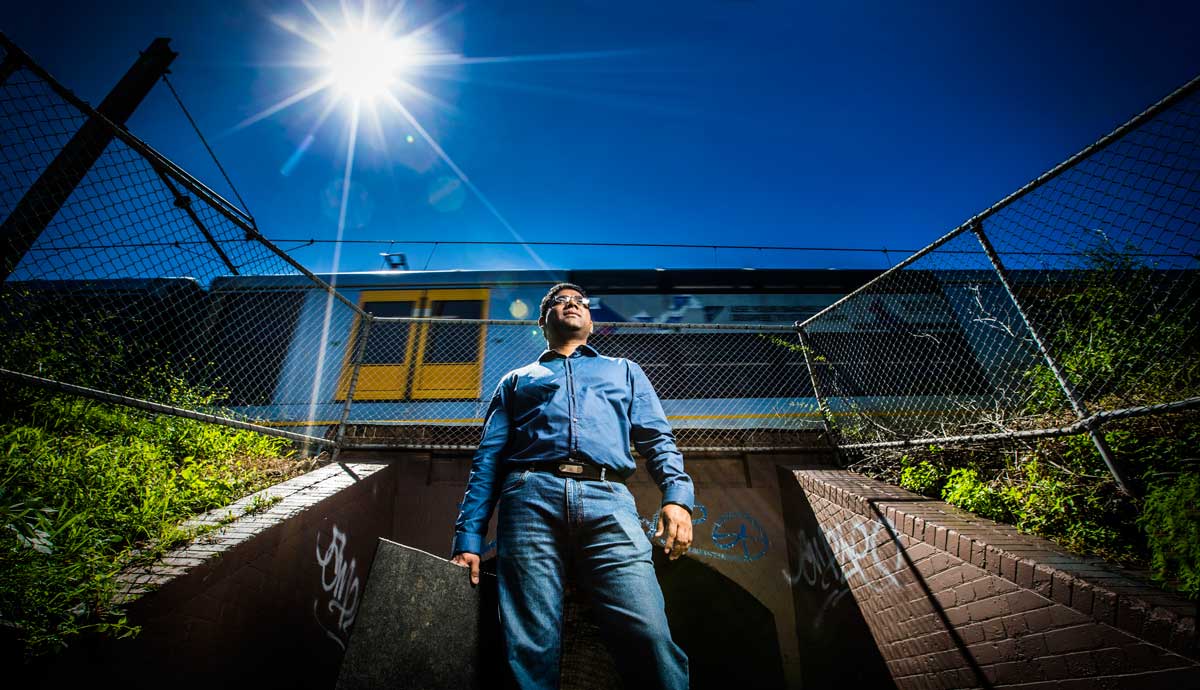February 23, 2016
Rails on rubber: recycled tyres to aid rail transport
Used tyres could be part of the solution to delivering high-speed rail and more efficient freight services in Australia.
High-speed rail remains a contentious issue due to the sheer cost needed to build more than 1700 kilometres of rail line at the standard needed to support trains travelling at more than 250 kilometres per hour, connecting Brisbane with Melbourne via Sydney.
A 2012 study prepared for the federal government put that total cost at $114 billion, with the average cost per kilometre of $65 million.
Improved rail track would also assist the nation’s freight challenge. According to Infrastructure Australia, freight traffic is expected to grow by 86 per cent by 2031 and much of that will be moved on road.
Rubber shock mats being designed and tested at UOW could provide considerable savings over the lifetime of a rail track through significantly reduced track degradation and correspondingly diminished maintenance costs.
While the concept of using rubber in rail track construction has long been known and is used in Europe to reduce rail noise and vibration in urban areas, there is no scientific basis and design standards for use as ‘shock mats’ to absorb energy from track movement.
Train ResearchAired - 18/02/16Reporter - Melissa Russell
Posted by WIN News Illawarra on Tuesday, 23 February 2016
Shaken to the foundations
Distinguished Professor Buddhima Indraratna, who leads the Centre for Geomechanics and Railway Engineering at UOW, said the load and speed of passenger and freight trains created a transfer of energy into the ground that could be likened to a ‘small earthquake’.
“All this energy has to be absorbed somewhere and it can cause the rock ballast to break up and turn to fine particles or even pulverise to powder,” he explained. “The crushed rock that turns to powder prevents water draining away.
“On such a track, the weight of train traffic will eventually cause the track to sink and buckle in places, leading to unusable track that is costly to repair or increase the risk of derailments.”
The rubber shock mats are made of tyres chopped into small pieces and bonded together. They can be placed under the track’s rock foundation (ballast) or beneath the sleepers to absorb the energy from passing trains.
“The heavier and the faster the trains, greater will be the energy transmitted to the track,” Professor Indraratna said. “Think of these mats as something like a shock absorber in a car.
“Australia has one of the longest rail track networks in the world but we also have poor soil conditions, particularly along the east coast. To use conventional engineering drives up the cost of each kilometre of track by millions of dollars.
“Another contributor to the cost is the lack of expertise and technology in certain areas of track design. To compensate for uncertainties some elements are often over-designed, injecting significant costs.
“By developing the proper technology that is based on scientifically proven design principles, we can help the community and politicians have the confidence to make this investment. This will make a major impact on the future of transport in this country.”

Solid results
PhD Student Sinniah Navaratnarajah (pictured at top of page) said the rubber mats studied using purpose-built large-scale test equipment, which replicate a section of actual rail track, showed up to 50 per cent reduction in damage to the ballast supporting the tracks and reduced track settlement by about one third.
“These are both considerable improvements in track reliability that, over time, contribute to reduced maintenance costs as well as the cost of emergency repairs that currently occur,” he said.
“The shocks mats would not be needed under every section of track. It would need to be used only in sections of track where the soil quality is poor and there is high risk of damage to the track.”
His work now involves developing a numerical model using computer software to predict the performance of rail track and quantify the optimum stiffness and thickness of the rubber shock mats to suit different ground conditions.
Rolling support
The project will be pushed along with additional funding from Tyre Stewardship Australia (TSA) and funds from the New South Wales Environmental Trust’s waste levy, part of the Waste Less, Recycle More initiative.
TSA has established an industry accreditation program for the sustainable management of end-of-life tyres and financially supports research projects that will help develop more viable long–term markets for recycled tyre feedstock.
Professor Indraratna said using recycled tyres was another example of innovation that involved replacing quarried materials for railroads with readily available industry wastes, such as steelmaking and mining.
“These waste products may be conditioned to perform as well as traditional construction materials, an economically enticing move towards the greening of Australian railways and certainly more favourable towards reducing the carbon footprint.”
